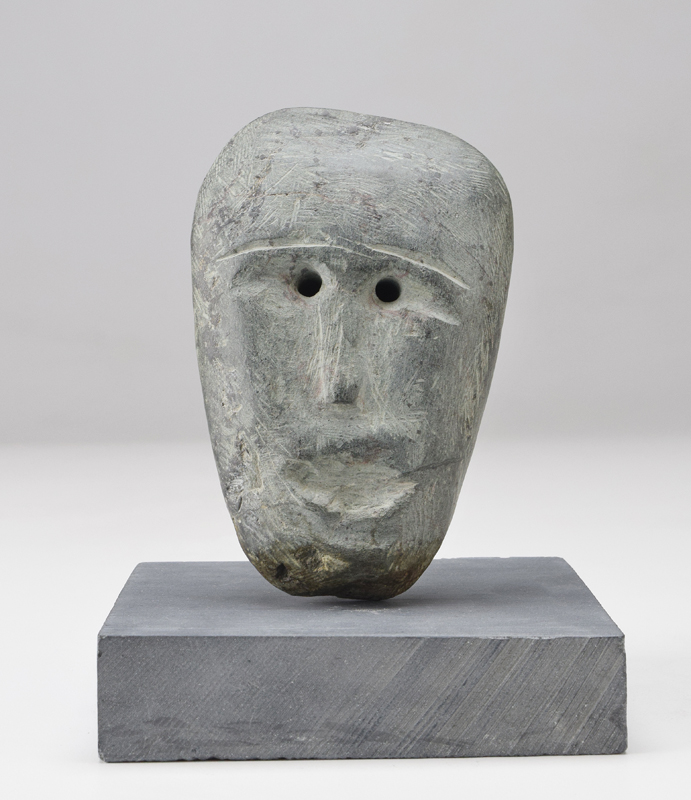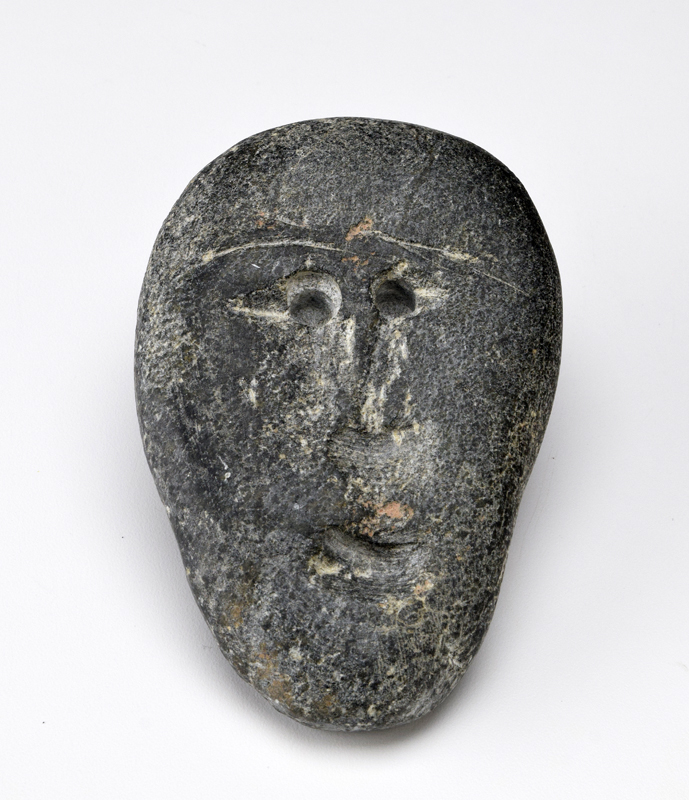TAIPANA: Cloth and Stone

July 22 – August 12
Opening Reception: Saturday, July 22, 2-4 PM
Marion Scott Gallery is pleased to announce TAIPANA: Cloth and Stone, opening on July 22 and continuing until August 12. The exhibition features the work of husband-and-wife duo, sculptor Jimmy Taipana and textile artist Annie Taipana, presenting their artistic output, each of radically different mediums, in context and conversation together. Featuring a series of Annie Taipana’s colourful, vibrant wall-hangings alongside Jimmy Taipana’s austere, elegant stone carvings of faces, the show presents a holistic view of the dynamic work produced by the artistic couple, who often created both in tandem and in collaboration with one another.
Annie Taipana was born in 1931 in the Back River region north of the Arctic Circle and is a member of the Utkusiksalingmiut (“people of the soapstone pots”). Originally known as Pikla, she grew up in a highly traditional milieu, learning the customs and skills of her people, who still lived semi-nomadically at that time, hunting and fishing for their food and clothing. While still in her teens, she married Jimmy Taipana, a hunter and shaman healer who would later become a noted sculptor. The couple continued to live on the land with their children, but relocated in the late 1950s to the inland community of Qamani’tuaq (Baker Lake) further south. In the early 1980s, Taipana began making appliquéd cloth works (“wall-hangings”) for sale to the local co-op, joining the settlement’s impressive cadre of textile artists. Unlike many of Qamanittuaq’s textile artists, Taipana has rarely made drawings, nor does she carve, suggesting that her practice is inseparable from the sewn medium in which she exclusively works.
Jimmy Taipana was born in 1919 and grew up around the Koonayuk (Ellice River) and Kuugjuaq (Perry River) area in the Kitikmeot Region of Nunavut. He led a traditional lifestyle for the majority of his life, living off the land before settling in Qamanittuaq (Baker Lake) with his wife Annie and their large family consisting of ten children. Jimmy Taipana is best known for his carvings of mask-like faces, often dotted and incised with lines that represent traditional Inuit tattoos, although he also sculpted smaller figurines and animals. He passed away at Qamani’tuaq in 2000.

Annie Taipana
Annie Taipana, untitled (composition of faces), wool & embroidery floss on wool duffel, 37.5 x 29.5 in. SOLD

Annie Taipana
Annie Taipana, untitled (people & shamans), wool duffel, felt & embroidery floss, 37.25 x 54 in., SOLD

Annie Taipana
Annie Taipana, untitled (animal composition), wool duffel, felt & embroidery floss, 31.5 x 27 in. SOLD












